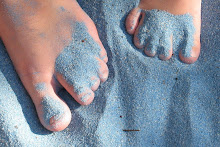Just spent a wonderful week in Florida hitting all of the amusement parks that one family could possible take in a five day period, following by a fun-filled family Christmas at our house with the extended family. (Can you say "tired"?)
So, it's time to get back to reality and visit my poor, lonely blog. Tempted as I am to write Disney Randoms or Christmas Randoms, I'll be settling for Cheese Randoms because I just ran across a European delicacy -- mozzarella cheese made from cat's milk.
Several things hit my brain when I first heard about this:
1) How do they get the cats to submit to milking? Surely, these people have met cats. Or, are the cats heavily sedated?
2) Who thought -- "Hey, why don't we make cheese out of cat's milk?" Some say that it was the idea of Franco Latitante from the Italian village of Rosenato.
3) What other mammals had they already tried to milk before turning to a house cat? Cows, horses, goats, yaks -- these I understand, but house cats?
I'm really hoping that someone will chime in here and tell me that this is just a joke. Until then, I'm going to be suspicious of any mozzarella cheese offered to me . . .
Happy New Year everyone!
Monday, December 26, 2011
Monday, December 5, 2011
Antifreeze in her Veins
What critter can freeze for several years, thaw out and walk away? No, not your mean Aunt Helga.
A Siberian Salamander.
These critters can survive deep freezes of up to -50 degrees. (It's 50 degrees above zero today, and I'm cold. I can't even imagine -50. Okay, so maybe I'm a major cold weather wimp.)
The Siberian Salamander is able to create "antifreeze" chemicals in its blood. The exact mechanism through which it does so is not known, but other animals use glucose, glycerol and related compounds to protect themselves in a similar way.
As you might guess, these little animals are found primarily in Siberia, but they can also be found in in northern Kazakhstan and Mongolia, northeastern China, on the Korean Peninsula, and on Hokkaidō, Japan, in the Kushiro Shitsugen National Park. They are thought to have come from Korea originally.
Knowing that they are found in such places doesn't make me want to visit those places any time soon -- at least not in the winter!
A Siberian Salamander.
These critters can survive deep freezes of up to -50 degrees. (It's 50 degrees above zero today, and I'm cold. I can't even imagine -50. Okay, so maybe I'm a major cold weather wimp.)
The Siberian Salamander is able to create "antifreeze" chemicals in its blood. The exact mechanism through which it does so is not known, but other animals use glucose, glycerol and related compounds to protect themselves in a similar way.
As you might guess, these little animals are found primarily in Siberia, but they can also be found in in northern Kazakhstan and Mongolia, northeastern China, on the Korean Peninsula, and on Hokkaidō, Japan, in the Kushiro Shitsugen National Park. They are thought to have come from Korea originally.
Knowing that they are found in such places doesn't make me want to visit those places any time soon -- at least not in the winter!
Subscribe to:
Comments (Atom)
